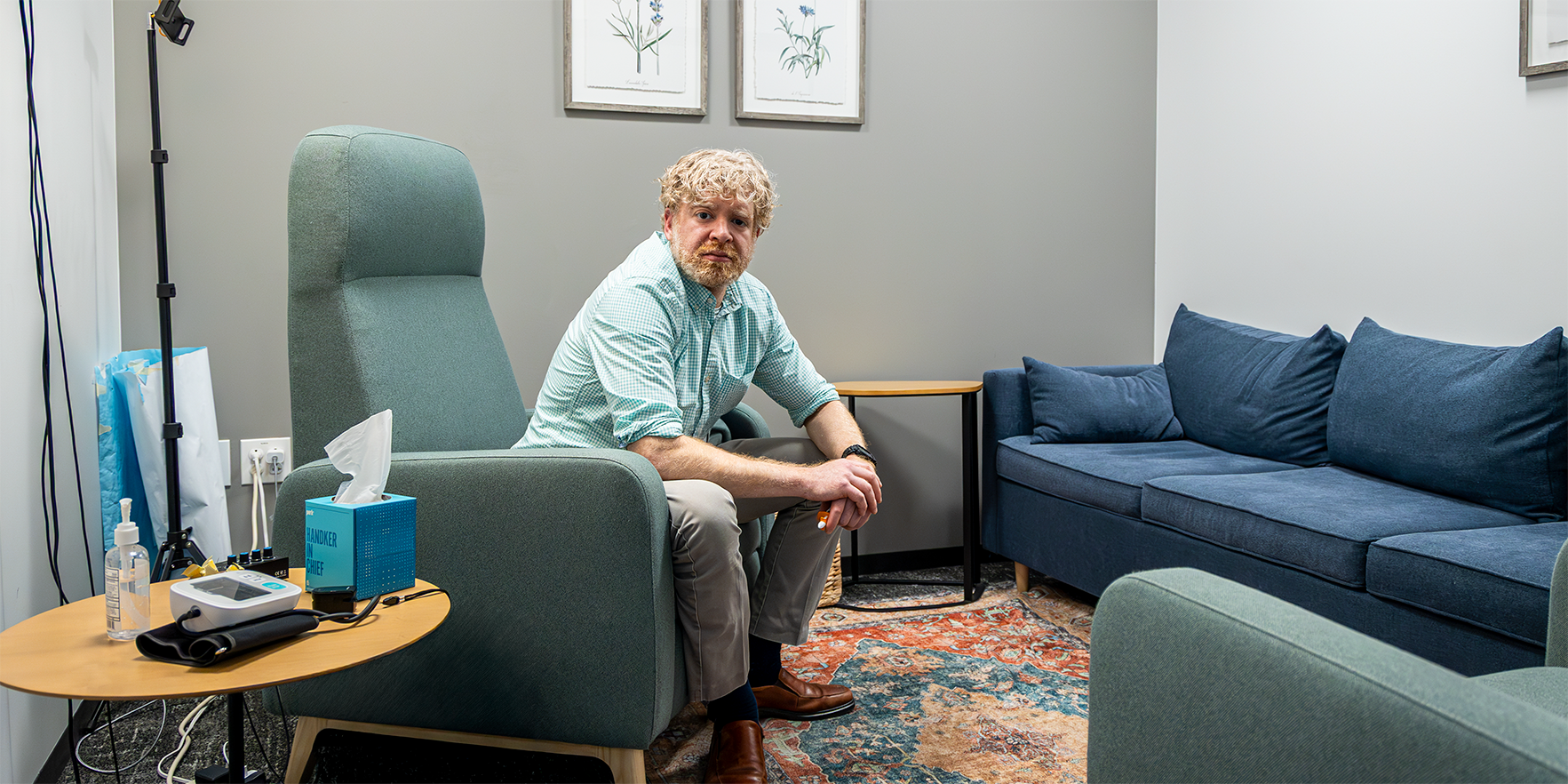The coronavirus outbreak impacting China has the world’s attention. Known as novel coronavirus, or 2019-nCoV, the new virus started in Wuhan, a city of 11 million. Within a few weeks it has spread to at least 24 other countries, affecting more than 40,000 people globally, and resulting in more than 900 deaths since mid-December.
Recently, the Colorado School of Public Health (ColoradoSPH) and its Department of Epidemiology convened a panel of campus experts to answer the question on everyone’s mind: here in Colorado, just how concerned should we be?
Panel members from ColoradoSPH included Thomas Jaenisch, MD, PhD, associate professor of epidemiology and pediatric infectious diseases; Sam Dominguez, MD, PhD, associate professor of epidemiology and pediatric infectious diseases; May Chu, PhD, clinical professor of epidemiology; and Molly Lamb, PhD, assistant professor of epidemiology; as well as Rachel Herlihy, MD, MPH, state epidemiologist for the Colorado Department of Public Health and Environment.
Let’s talk deadly viruses (no, not that one)
Regarding viruses that endanger lives, panel members were quick to point out that seasonal influenza is a much bigger risk to most Americans than novel coronavirus. Compared to the 13 cases of 2019-nCoV currently confirmed in the United States, the Centers for Disease Control (CDC) reports that at least 1,500 times that number of hospitalizations have occurred in this country due to seasonal flu since October.

Thomas Jaenisch, far right, associate professor of epidemiology and pediatric infectious diseases in the Colorado School of Public Health, leads a panel discussion on the coronavirus on Feb. 4 at CU Anschutz.
In fact, coronaviruses in general are fairly common – the CDC reports that most people will get infected with a coronavirus at some point in their lives. Most coronaviruses cause mild to moderate symptoms that are similar to the common cold.
Some coronaviruses can be deadly, however; past outbreaks include the SARS coronavirus in 2003 and MERS coronavirus in 2012. SARS, MERS and 2019-nCoV all appear to have originated in bats. So how is 2019-nCoV different from other viruses, even other coronaviruses?
Novel coronavirus: how infectious is it?
In an overview of 2019-nCoV, Jaenisch said the virus can be spread through airborne droplets, like coughing and sneezing, as well as through direct contact with infected people. The time between exposure to 2019-nCoV and experiencing symptoms was reported to be about five days in most people.
‘If people travel before they are symptomatic, it's hard to identify them. That puts this virus in a different category.’ – Thomas Jaenisch, MD, PhD
Because of the delayed onset of symptoms, people may not know they’re infected. “If people travel before they are symptomatic, it’s hard to identify them,” explained Jaenisch. Unlike SARS or MERS coronaviruses, 2019-nCoV can be transmitted by people before they are experiencing symptoms. “That puts this virus in a different category,” said Jaenisch.
The early serial interval, a measure of how quickly the infected population can double in the early days, has been calculated as 7.5 days, though Jaenisch said this is likely to slow down as the epidemic progresses.
The basic reproductive number, called R0, is an estimate of how many new people can be infected by each person carrying the virus. The R0 for 2019-nCoV has been estimated as between 2.2 and 5 new people infected, based on results from three studies. For comparison, R0 from other diseases include Ebola with R0 between 1.5 and 2.5, the 1918 pandemic flu with R0 between 2 and 5, and measles with R0 between 12 and 18.
As an epidemiologist with the Colorado Department of Public Health and Environment, Rachel Herlihy said her recommendation is to pay attention to the numbers. “For us, our level of concern would be raised if there was widespread person-to-person contact in another country besides China.”
Novel coronavirus: how dangerous is it?
As of publication, 2019-nCoV infections have resulted in 910 deaths. Most deaths have been due to pneumonia, as a complication of coronavirus infection and were reported to have occurred in the elderly or those with other serious underlying health conditions.

The frequency with which 2019-nCoV causes death, called the case fatality rate, is currently about 2%, compared to about 10% for SARS, 30-40% for MERS and 2.5% for the 1918 pandemic flu. However, Jaenisch warned that case fatality rates in the early stages of an epidemic are hard to predict and said that the true rate may be closer to 0.1% or less, which would put the case fatality rate in the same order of magnitude as that of seasonal influenza.
Novel coronavirus: how do we protect ourselves?
Can gloves and masks prevent coronavirus infection? The World Health Organization (WHO) recommends that people experiencing coughing or sneezing should wear a mask to prevent the spread of illness, as well as those providing care to someone with symptoms, either professionally or at home. People who don’t fit these criteria don’t need masks and can actually reduce mask supplies for those who need them.
“Masks don’t actually block that many pathogens unless they are properly fitted,” said Chu. She noted that masks can help reduce people touching their faces and mouths, so they may help prevent disease indirectly. Relative to gloves, Herlihy said, “The best public health measure we can take is to wash our hands.”
WHO does not recommend border enforcement, because it is generally not effective at disease containment. Beyond potentially triggering panic among the travel-restricted group, travel bans can delay or block help, for example by prohibiting entry of additional medical personnel.
Additionally, travel bans can inflame discrimination against certain areas or groups. “It’s important to remember that new viruses come from all over the world, even from the U.S.,” said Jaenisch. Dominguez added that emerging viruses have even been identified from Colorado.
Coronavirus readiness on campus: “We are prepared”
How ready is the CU Anschutz Medical Campus in the event of a local coronavirus outbreak?
“Our hospitals are meeting daily to go over our preparedness plans,” said Dominguez. “We’ve been preparing for these scenarios for years and we’re ready to act when necessary.” He added that current conversations about 2019-nCoV are focused on logistics: how to get patients safely into the facility and how to keep personnel safe. “Healthcare workers often have higher rates of infection in disease outbreaks,” he said.
Dominguez lauded the scientific community’s efforts to understand 2019-nCoV at a molecular level. “We already have the genetic sequence of the virus. We are weeks ahead of where we were at this point in the SARS outbreak,” he said. “The pace of science right now is mind-boggling.”
Coronavirus at a glance (statistics current as of Feb. 10, 2020):
- 40,554 cases have been confirmed globally, with over 99% of cases occurring in China
- 319 cases have been confirmed outside China in 24 countries
- 910 total deaths have occurred due to 2019-nCoV, with 908 deaths in China and one death each in the Philippines and Hong Kong
- Most deaths have occurred in the elderly or those with other health conditions
In the United States:
- 13 cases of 2019-nCoV have been confirmed in six states
- States with confirmed cases include Arizona, California, Illinois, Massachusetts, Washington and Wisconsin
Currently, all suspected cases of 2019-nCoV must be sent to the CDC in Atlanta for testing, though this is expected to change.
To see updated data that has been reported worldwide, visit the data map hosted by the Johns Hopkins University.
Guest contributor: Shawna Matthews is a freelance writer specializing in topics related to science and healthcare.



